uncle sam
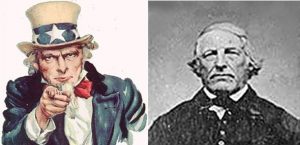 Everyone has heard the term, Uncle Sam used when referring to the United States government, but while the government and the people of the United States have “adopted” that term to mean the United States government, it was really never intended to be so. If you ask most people, the average older American would most likely point to the early 20th century and Sam’s frequent appearance on army recruitment posters. Nevertheless, the figure of Uncle Sam actually dates back much further than that. The actual figure of Uncle Sam, dates from the War of 1812. At that point, most American icons had been geographically specific, centering most often on the New England area. However, the War of 1812 sparked a renewed interest in national identity which had faded since the American Revolution.
Everyone has heard the term, Uncle Sam used when referring to the United States government, but while the government and the people of the United States have “adopted” that term to mean the United States government, it was really never intended to be so. If you ask most people, the average older American would most likely point to the early 20th century and Sam’s frequent appearance on army recruitment posters. Nevertheless, the figure of Uncle Sam actually dates back much further than that. The actual figure of Uncle Sam, dates from the War of 1812. At that point, most American icons had been geographically specific, centering most often on the New England area. However, the War of 1812 sparked a renewed interest in national identity which had faded since the American Revolution.
The term Uncle Sam was actually the nickname of a man named Samuel Wilson, who was a meat packer from Troy, New York. Sam supplied rations for the soldiers during the War of 1812. He had served in the American Revolution at the age of 15, and while he was born in Massachusetts, he relocated to the town of Troy, New York after the war. In Troy, Samuel and his brother, Ebenezer began the firm of E and S Wilson, a meat packing facility. Samuel was a man of great fairness, reliability, and honesty, who was devoted to his country. All of the local residents really liked Samuel, and they began calling him Uncle Sam.
During the War of 1812, the demand for meat supply for the troops was badly needed. Because he had been a soldier, Samuel had a soft spot in his heart for the soldiers. Secretary of War, William Eustis, made a contract with Elbert Anderson Jr of New York City to supply and issue all rations necessary for the United States forces in New York and New Jersey for one year. Anderson ran an advertisement on October 6, 1813 looking to fill the contract. The Wilson brothers bid for the contract and won. The contract was to fill 2,000 barrels of pork and 3,000 barrels of beef for one year. Their location on the Hudson River, made it ideal to receive the animals and to ship the product. As a security measure, the contractors were required to stamp their name and where the rations came from onto the food they were sending. Wilson’s packages bore the label “E.A. – US,” which stood for Elbert Anderson, the contractor, and the United States. When an individual in the meat packing facility asked what it stood for, a coworker joked and said it referred to Sam Wilson, Uncle Sam. A number of the soldiers were originally from Troy, and familiar with Samuel. When they saw the designation on the barrels, they, being acquainted with Sam Wilson and his nickname Uncle Sam, as well as the knowledge that Wilson was feeding the army, led them to the same conclusion. The local newspaper soon picked up on the story and Uncle Sam eventually gained widespread acceptance as the nickname for the U.S. federal government.
This is, of course, an endearing local story, and therefore, leaves some doubt as to whether it is the actual source of the term. Uncle Sam is mentioned previous to the War of 1812 in the popular song “Yankee Doodle,” which appeared in 1775. Nevertheless, the song doesn’t make it clear whether this reference is to Uncle Sam as a metaphor for the United States, or to an actual person named Sam. Another early reference to the term appeared in 1819, predating Wilson’s contract with the government. The connection between this local saying and the national legend is not easily traced. As early as 1830, there were inquiries into the origin of the term Uncle Sam. The connection between the popular cartoon figure and Samuel Wilson was reported in the New York Gazette on May 12, 1830. Whatever the source, Uncle Sam immediately became popular as a symbol of an ever-changing nation. His “likeness” appeared in drawings in various forms including resemblances to Brother Jonathan, a national personification and emblem of New England, and Abraham Lincoln, and others. In the late 1860s and 1870s, a political cartoonist named Thomas Nast began popularizing the image of Uncle Sam…building on the warm fuzzy feel of a beloved uncle. Nast continued to evolve the image, eventually giving Sam the white beard and stars-and-stripes suit that are associated with the character today.
However, it was a military recruiting poster, created in about 1917, that set the image of Uncle Sam was firmly set into American consciousness. The famous “I Want You” recruiting poster was created by James Montgomery Flagg and four million posters were printed between 1917 and 1918. The image was a really powerful one: 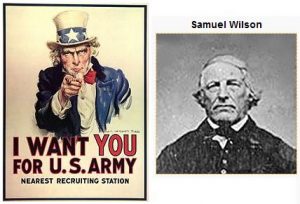 Uncle Sam’s striking features, expressive eyebrows, pointed finger, and direct address to the viewer made this drawing into an American icon. Throughout the years, Uncle Sam has appeared in advertising and on products ranging from cereal to coffee to car insurance. His likeness also continued to appear on military recruiting posters and in numerous political cartoons in newspapers. Finally, in September of 1961, the U.S. Congress recognized Samuel Wilson as “the progenitor of America’s national symbol of Uncle Sam.” Samuel Wilson died at age 88 in 1854, and was buried next to his wife Betsey Mann in the Oakwood Cemetery in Troy, New York. The town proudly calls itself “The Home of Uncle Sam.”
Uncle Sam’s striking features, expressive eyebrows, pointed finger, and direct address to the viewer made this drawing into an American icon. Throughout the years, Uncle Sam has appeared in advertising and on products ranging from cereal to coffee to car insurance. His likeness also continued to appear on military recruiting posters and in numerous political cartoons in newspapers. Finally, in September of 1961, the U.S. Congress recognized Samuel Wilson as “the progenitor of America’s national symbol of Uncle Sam.” Samuel Wilson died at age 88 in 1854, and was buried next to his wife Betsey Mann in the Oakwood Cemetery in Troy, New York. The town proudly calls itself “The Home of Uncle Sam.”
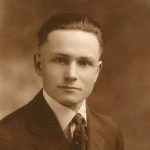
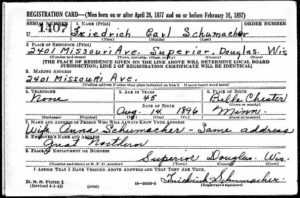 As I have researched my family history, I have come across a number of World War II draft registration cards for older men. I found that to be very strange. It seemed odd to me that men who were technically too old to serve in battle…at least by military standards, were required to register, and quite possibly be drafted into the war. Some of these men weren’t so very old by today’s standards, such as my great uncle, Friedrich Schumacher, who was 45 at the time of his World War II draft registration, or my grandfather, George Byer, who was 48 at the time of his World War II draft registration, but others, such as my grandfather, Allen Luther Spencer, who was 63 at the time of his World War II registration, were much older. These draft registrations really surprised me. Why would our government need to have these men register?
As I have researched my family history, I have come across a number of World War II draft registration cards for older men. I found that to be very strange. It seemed odd to me that men who were technically too old to serve in battle…at least by military standards, were required to register, and quite possibly be drafted into the war. Some of these men weren’t so very old by today’s standards, such as my great uncle, Friedrich Schumacher, who was 45 at the time of his World War II draft registration, or my grandfather, George Byer, who was 48 at the time of his World War II draft registration, but others, such as my grandfather, Allen Luther Spencer, who was 63 at the time of his World War II registration, were much older. These draft registrations really surprised me. Why would our government need to have these men register?
My curious mind had to know the answer to that question, and so I began to look online to see if anything was said about it at all. Well, it only took looking at three websites to find the answer. I wondered if they were just desperate for soldiers, because as most people know, World War II saw the most American war deaths at 405,399, than any other war in American history. Nevertheless, that was not the reason for the Fourth 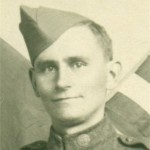
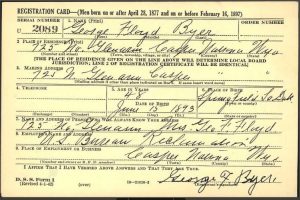 Registration, which became known as the Old Man’s Draft, because it targeted men between the ages of 45-64 years of age. No, these men were not going to be soldiers who were require to go into battle. This draft registration was intended to provide the government with a register of manpower…men who might be eligible for national service. Help was needed on the home front, and this was a way to ensure that the manpower needed was available. After all, if you are drafted, you are required to serve.
Registration, which became known as the Old Man’s Draft, because it targeted men between the ages of 45-64 years of age. No, these men were not going to be soldiers who were require to go into battle. This draft registration was intended to provide the government with a register of manpower…men who might be eligible for national service. Help was needed on the home front, and this was a way to ensure that the manpower needed was available. After all, if you are drafted, you are required to serve.
Registration of the Old Man’s Draft began on April 27, 1942 at local draft boards around the country, and like the patriotic citizens they were, my great uncle, and my grandfathers, along with many, many other older men, went to register. The lines were long when the men went in to register, according to the Poughkeepsie Journal, but the biggest regret that was heard among the men waiting there was…that they were too old to fight!! Seriously!! There were no complaints about standing for hours in line, or complaints about having to register at all…just that they would not see battle. These were not warmongers, but rather patriots who wanted to help in whatever way they could, and now Uncle Sam was telling them that their contribution was important. It felt 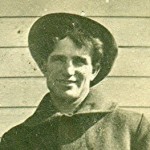
 amazing to these men. They were needed!! The biggest complication was that some of the men couldn’t read or write, and some had forgotten things like addresses, telephone numbers, or dates (including the year of birth, which is evident on my grandfather’s card in that his year of birth was listed as 1883, but he was born in 1879). Nevertheless, these men were hopeful that somehow they could be useful in the war effort. I find that completely amazing…especially in light of the lack of patriotism so often seen these days.
amazing to these men. They were needed!! The biggest complication was that some of the men couldn’t read or write, and some had forgotten things like addresses, telephone numbers, or dates (including the year of birth, which is evident on my grandfather’s card in that his year of birth was listed as 1883, but he was born in 1879). Nevertheless, these men were hopeful that somehow they could be useful in the war effort. I find that completely amazing…especially in light of the lack of patriotism so often seen these days.

